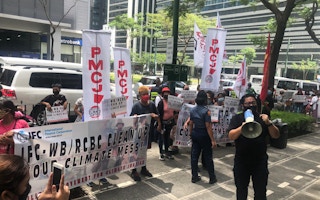Asean member states (AMS) are among the signatories of the United Nations Charter and the 2015 Paris Agreement, where states are obligated to respect, protect, and fulfil environmental rights as human rights. The “respective obligations” referred to in the Paris Agreement potentially include those relating to the rights to life, health, development, an adequate standard of living (including food, water and sanitation, and housing) and self-determination. However, Asean’s implementation and enforcement of environmental rights and human rights are hindered by domestic, geopolitical and commercial realities.
A common defence or counter argument against the full implementation of environmental rights as human rights is that most Asean states are considered “developing” countries, even if most of the region’s development results in environmental degradation and strains our natural environment. Regionally, citizens of AMS are directly affected by resultant problems such as pollution, loss of biodiversity, and more extremely, climate change impacts. In turn, these create negative, often significant, impacts on people’s health and well-being, infringing upon their fundamental human right to life.
Responding to these urgent environmental and human rights problems is a major challenge for AMS, not least because they need to employ new strategies and tools to improve citizens’ access to justice. Across the region, governments need to strengthen the rule of law generally and tighten the protection of human rights and the environment specifically. Challenges within AMS and regionally include fragmented or limited legal protection, inadequate resources (such as funding, capacity, human resources), limited public awareness and weak political will.
While some AMS might have better legal protections for environmental rights, others might face more hindrances in the rights’ implementation. For example, Indonesia has listed in its Constitution the right to a healthy environment, which might facilitate its actual implementation but most other AMS lack similar constitutional or legal provisions and protections.
An approach towards implementing environmental rights as human rights in Asean needs to consider these differences of the AMS but keep the understanding of basic rights intact. Asean as a regional organisation can play a role in furthering the implementation of environmental rights as human rights by facilitating members in designing domestic legal instruments which interpret environmental rights as human rights. Asean can assist and provide member states with information and guidelines on the legal protection of environmental rights as human rights, including case studies and examples that are easily understood. Ideally, Asean would pool resources from donor organisations and/or developed countries to address the lack of resources in the region, enhance campaigns and publications on environmental rights as human rights in Asean to increase public awareness, and encourage AMS governments to fulfil their obligations towards these rights.
While implementing environmental rights as human rights in Asean is challenging, it is not impossible. The different political systems of the AMS would approach the implementation of environmental rights as human rights in different ways, based on their political frameworks. Democratic or more liberal countries like Indonesia and the Philippines will be more likely to engage with institutions such as civil society, free press, and public participation to advocate for the protection of local communities and to hold their respective governments accountable for environmental rights and protection. Authoritarian or less liberal countries such as Vietnam and Laos will depend upon the central role of government in environmental rights protection and civil society might have a more limited role, while mixed system countries will be subject to different priorities and balances of power.
While implementing environmental rights as human rights in Asean is challenging, it is not impossible.
Regional and local institutions and governments are also important stakeholders in this process of environmental rights implementation, since most environmentally devastating development activities are happening at these levels. Governments need to understand that environmental rights are increasingly recognised as an important element of human rights because the environment is not just a resource to be exploited for economic gain. It is an essential element of human well-being, dignity, and survival.
This conceptualisation sheds light on certain vulnerable groups that stand to be disproportionately affected when environmental rights are contravened, including Indigenous peoples, women, marginalised communities, local communities, and the poorest poor. Saving their homelands and regions from environmental devastation also means protecting human rights and the survival of future generations and this would ideally take priority in local governments’ agendas. Researchers, academia, civil society, business sectors, and public at large can join forces in underlining the importance of environmental rights as human rights.
International and regional efforts have been taken to accord environmental rights the same fundamentality and protection as human rights. For example, the Latin America and the Caribbean countries have signed the 2018 Escazú Agreement, the first regional environmental treaty aiming to protect the right of every person in present and future generations to live in a healthy environment and to sustainable development. In Asean, there is no general regional agreement securing environmental rights and obligations but the Asean Agreement on Transboundary Haze Pollution is an example of a sectoral achievement.
Environmental rights as a human right might be a difficult and politically challenging concept to understand and apply, but if the will and power of all stakeholders in Asean could be harnessed to support it, its implementation in the region would not be impossible.
Linda Yanti Sulistiawati is a senior research fellow at the Asia-Pacific Centre for Environmental Law (APCEL) in the law faculty at the National University of Singapore and associate professor in the Faculty of Law at Universitas Gadjah Mada, Yogyakarta, Indonesia.
This article was first published by ISEAS – Yusof Ishak Institute as a Fulcrum commentary.











